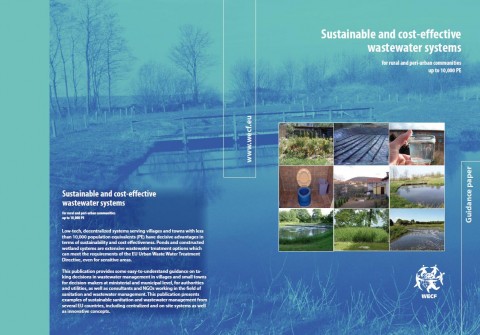Sustainable and cost-effective wastewater systems for rural and peri-urban communities up to 10,000 PE
Wendland, C. (2010)

Published in: 2010
Publisher:
WECF
Author:
Wendland, C.
Uploaded by:
SuSanA secretariat
Partner profile:
common upload
5734 Views
89 Downloads
Content - Summary
The scope of this paper is to provide some easy-to-understand guidance on taking decisions in wastewater management in settlements and towns with up to 10,000 population equivalents (PE).
Specific aims of the guidance paper are :
- To inform about cost-effective and sustainable options for sanitation,
wastewater collection and treatment which meet the requirements of the Urban Wastewater Treatment Directive for agglomerations with 2,000 – 10,000 PE and for smaller agglomerations with less than 2,000 PE to improve the hygienic and environmental situation in the frame of the Water Framework Directive
- To give guidance to decision-makers how to select appropriate systems for sanitation and wastewater management with respect to relevant framework conditions, in particular to give decisive advantages and drawbacks of non-conventional systems, decentralized and semi-centralized systems, ponds and constructed wetlands as well as innovative concepts
also for settlements without reliable water supply
- To show examples for sustainable and cost-effective solutions from different EU countries
The target group of this guidance paper are decision-makers on ministerial and municipal level, authorities and utilities, as well as consultants and NGOs working in the field of sanitation and wastewater
management.
Bibliographic information
Wendland, C. (2010). Sustainable and cost-effective wastewater systems for rural and peri-urban communities up to 10,000 PE. WECF
Filter tags
Constructed wetlands English Greywater or wastewater Peri-urban Rural Urine diversion dehydration toilets (UDDTs)















